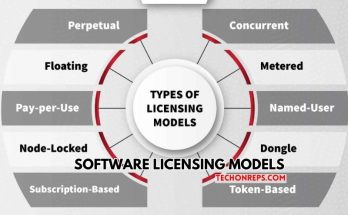Cloud Oversight: Navigating the Landscape of Monitoring and Management
In today’s fast-paced digital landscape, cloud oversight computing has revolutionized the way businesses operate. The ability to store and access data remotely has streamlined processes, increased efficiency, and transformed traditional business models. However, with great power comes great responsibility. The oversight of cloud infrastructure is paramount in ensuring seamless operations and safeguarding valuable resources. Let’s delve into the realm of monitoring and management in the clouds to uncover best practices, challenges, and future trends that will shape the way organizations navigate this dynamic environment.

The Importance of Cloud Oversight
Cloud oversight plays a crucial role in ensuring the smooth operation of cloud computing environments. With businesses increasingly relying on the cloud for their operations, having proper oversight is essential to monitor performance, security, and costs effectively.
Without adequate monitoring and management tools in place, organizations risk facing issues such as downtime, data breaches, or unexpected expenses. Cloud oversight helps prevent these challenges by providing real-time visibility into the cloud infrastructure.
By implementing robust monitoring solutions tailored to their specific needs, businesses can proactively identify and address potential issues before they escalate. This proactive approach not only enhances operational efficiency but also boosts overall system reliability and performance.
Moreover, effective cloud oversight allows companies to optimize resource utilization and streamline processes. By gaining insights into usage patterns and trends, organizations can make informed decisions that drive cost savings and enhance productivity across the board.
Types of Cloud Monitoring and Management Tools
When it comes to monitoring and managing cloud systems, there is a wide range of tools available to help organizations ensure optimal performance and security.
One type of tool commonly used is infrastructure monitoring, which focuses on tracking the health and performance of servers, networks, and storage resources in the cloud environment. These tools provide real-time insights into resource utilization and help identify potential bottlenecks or issues that may arise.
Another essential category is application performance monitoring (APM) tools. APM solutions monitor the behavior of applications running in the cloud, providing visibility into user experience, application dependencies, and code-level insights to optimize performance.
Security information and event management (SIEM) tools are crucial for detecting and responding to security threats in the cloud. These tools collect log data from various sources within the cloud environment to detect suspicious activities or anomalies that may indicate a potential breach.
Cloud cost management tools are also vital for controlling expenses associated with cloud services. These tools help organizations track spending across different cloud providers, optimize resource allocation, and forecast future costs based on usage patterns.
In addition to these categories, there are hybrid monitoring solutions that offer comprehensive visibility across both on-premises infrastructure and multiple cloud platforms. By leveraging these diverse types of monitoring and management tools, businesses can proactively address issues, improve efficiency, and enhance security posture, and deliver better experiences for users accessing their services in the cloud ecosystem.
Best Practices for Implementing Cloud Oversight
Implementing cloud oversight requires a strategic approach to ensure the smooth operation of your cloud infrastructure. Clearly define your monitoring objectives and KPIs to track the performance of your cloud services effectively.
Choose the right tools that align with your specific needs, whether it is real-time monitoring, cost optimization, or security compliance. It’s essential to regularly review and update these tools to adapt to changing requirements.
Establish automated alerts and notifications for immediate response to any anomalies or issues within your cloud environment. This proactive approach can help prevent potential disruptions before they escalate.
Regularly evaluate and optimize your resource utilization based on data insights gathered from monitoring tools. This practice ensures efficient allocation of resources and cost savings in the long run.
Invest in continuous training for your IT team to enhance their skills in utilizing monitoring tools effectively. Keeping abreast of evolving technologies will enable you to stay ahead in managing your cloud infrastructure seamlessly.
Challenges and Solutions for Effective Cloud Oversight
Navigating the landscape of cloud oversight comes with its own set of challenges. One common issue is the complexity of multi-cloud environments, making it hard to monitor and manage all resources efficiently. This can lead to gaps in visibility and potential security risks.
Another challenge is ensuring compliance with regulations across different cloud platforms, each with its own unique rules. Without a unified monitoring strategy, organizations may struggle to maintain regulatory standards.
To address these challenges, integrating automated monitoring tools that provide real-time insights into performance and security can be beneficial. Implementing centralized dashboards for holistic visibility across all clouds helps streamline oversight processes.
Moreover, establishing clear roles and responsibilities within the team for monitoring tasks fosters accountability and ensures timely responses to alerts or issues that arise in the cloud environment. By proactively addressing these challenges with strategic solutions, organizations can enhance their cloud oversight capabilities for optimized performance and security posture.
Case Studies: Successful Implementation of Cloud Oversight
Imagine a scenario where a multinational corporation successfully implemented cloud oversight to streamline their operations and enhance efficiency. By utilizing advanced monitoring tools, they were able to proactively identify and rectify potential issues before they impacted their services.
In another case study, a medium-sized business seamlessly integrated cloud management solutions into their infrastructure. This move not only optimized resource allocation but also improved scalability, allowing them to adapt to fluctuating demand effortlessly.
Furthermore, a healthcare provider revolutionized patient care by leveraging cloud monitoring technology. They ensured data security and compliance while maximizing system performance, ultimately leading to better patient outcomes and satisfaction levels.
These success stories highlight the transformative power of implementing robust cloud oversight strategies across various industries. Stay tuned for more inspiring examples in the evolving landscape of monitoring in cloud technologies.
Future Trends in Cloud Monitoring and Management
As technology continues to evolve, the future of cloud monitoring and management is poised for significant advancements. One key trend that experts predict is the rise of AI-driven solutions in cloud oversight. These intelligent systems can analyze vast amounts of data in real-time, enabling proactive problem-solving and optimizing performance.
Another emerging trend is the increasing focus on security within cloud monitoring tools. With cyber security threats on the rise, companies are investing more resources into ensuring their cloud environments are secure from potential breaches or attacks.
Moreover, we can expect to see a shift towards multi-cloud monitoring strategies as organizations look to leverage multiple cloud providers for various workloads. This approach will require more comprehensive tools that offer unified visibility across different platforms and services.
In addition, as edge computing gains momentum, there will be a growing need for specialized monitoring solutions tailored to decentralized infrastructures. Cloud oversight will extend beyond traditional data centers to include edge devices like IoT sensors and gateways.
The future of cloud monitoring and management holds promises of greater automation, enhanced security measures, multi-cloud integration capabilities, and adaptability to evolving technologies – shaping a landscape where organizations can efficiently manage their digital operations with confidence.
Conclusion:
Cloud oversight is a critical component of managing and monitoring cloud environments effectively. By implementing the right tools, best practices, and solutions, organizations can ensure optimal performance, security, and cost efficiency in their cloud operations. As technology continues to evolve, staying ahead of trends in cloud monitoring and management will be key to maximizing the benefits of the cloud. Embracing these changes proactively will empower businesses to adapt swiftly and thrive in an increasingly digital world.



